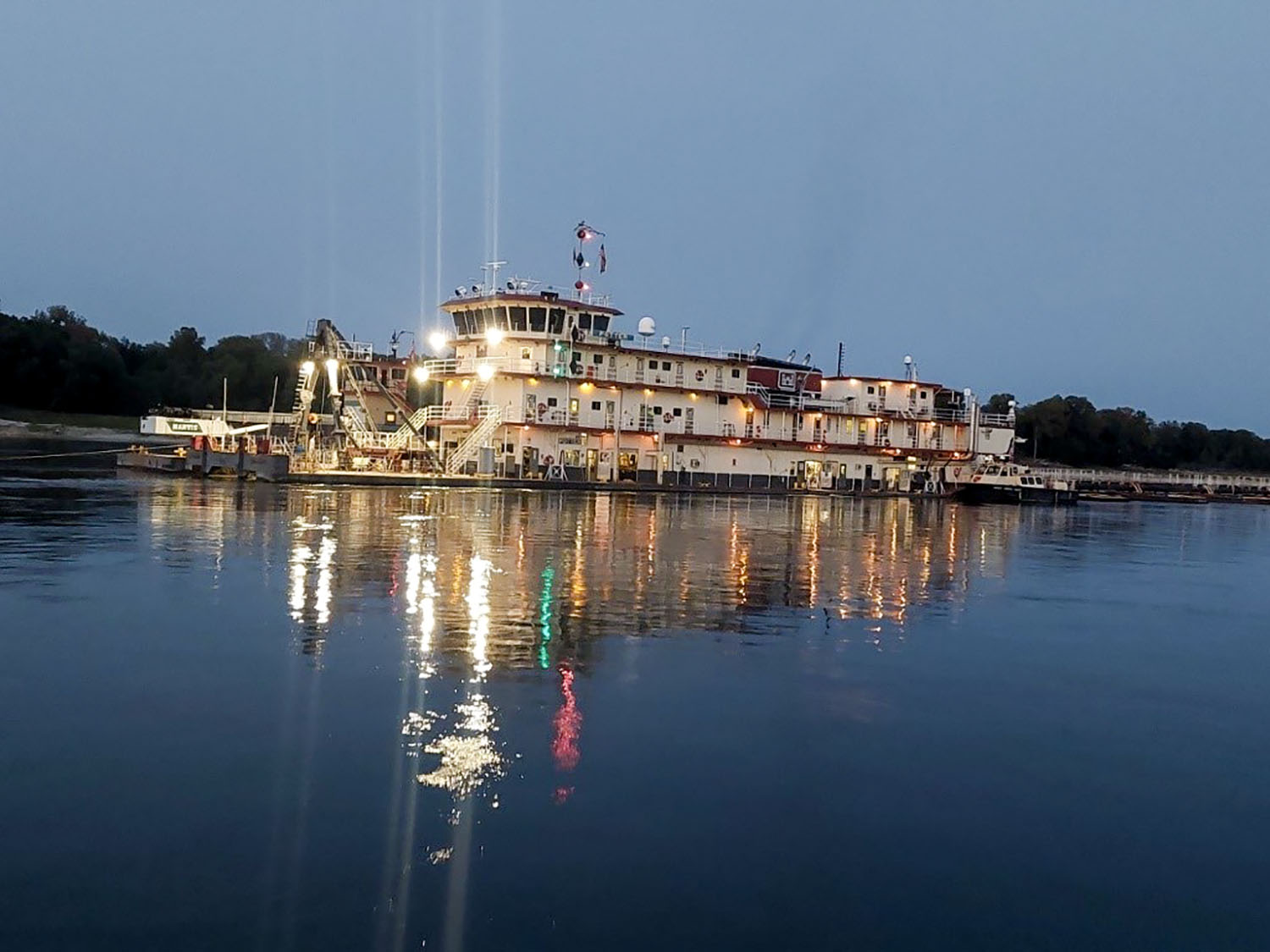A panel at the recently concluded FreightWeek STL cast a spotlight on the behind-the-scenes collaboration that allowed more of the Missouri and Mississippi rivers to stay open during last year’s drought than during comparable events in earlier years. Mary Lamie, executive vice president of Multi Modal Enterprises at Bi-State Development and executive director of the St. Louis Regional Freightway, hosted the panel.
Cheryl Ball, Missouri Department of Transportation administrator of waterways and freight, described the creation of the Missouri River’s drought action plan put together by a coalition of states that border the river. Having such a plan was important because when drought restricts traffic on the river, it pushes cargo to already congested road and rail systems.
Lou Dell’Orco, chief of operations for the St. Louis Engineer District, said the hydrographs for St. Louis last year closely mirrored those of the 2012 drought and low-water event. In that year, attention was focused on removing dangerous rock pinnacles in the mid-Mississippi River near Thebes, Ill. Last year, the Corps applied lessons learned from that year to make dredging more efficient and keep the river open longer. The Corps deployed five dredges, four of them Corps-owned along with the contractor-owned Bill Holman dredge, in 70 separate locations, moving 10 million cubic years of material — more than twice the 4 million cubic yards moved during a normal year. Dell’Orco praised the Corps crews for maintaining and repairing the 90-year-old dredges, which will be ready for action this July.
Shane Kinne, executive director of the Coalition to Protect the Missouri River, said that despite last year’s drought, “These are exciting times for Missouri River navigation.” The Infrastructure Investment and Jobs Act made $249 million available for Missouri River dredging, bank stabilization and repair. “This is having a significant impact on the reliability and resilience of the Missouri River,” he said. “And a lot of those dollars haven’t hit the ground yet.” That investment, along with a healthy snowpack last winter, means this navigation season looks promising.
Chris Kenklen, deputy director of the Missouri Department of Agriculture, detailed how his department worked closely with all of the agriculture organizations and the United States Department of Agriculture to make sure farmers filed accurate drought reports, on which the USDA and other agencies made decisions about drought measures, such as when and where to allocate water for livestock.
Dell’Orco described how the Corps published weekly reports on river levels and worked closely with the Coast Guard, the River Industry Action Committee (RIAC) and mariners to spread accurate information about river levels and dredge activity. He coordinated twice-weekly calls among various partners to maximize output during drought conditions on the middle Mississippi. Both Dell’Orco and Lamie were members of a special supply chain task force last year.
Kinne said the Port of Kansas City is the non-federal sponsor for two major ongoing multi-state river management studies that will be used to make decisions on bank stabilization, flow rates, reservoir allocations, new technology and tributary management. When they are complete, a Chief’s Report will present the results to Congress.
Kinne said that even though Missouri River flows can’t be managed solely to support the middle Mississippi, they still have a huge impact, making up as much as 80 percent of the Mississippi’s flow under certain conditions. “When business is good on the Missouri River it will be good on the Mississippi,” he said.
Caption for photo: The St. Louis Engineer District dredge Potter.




